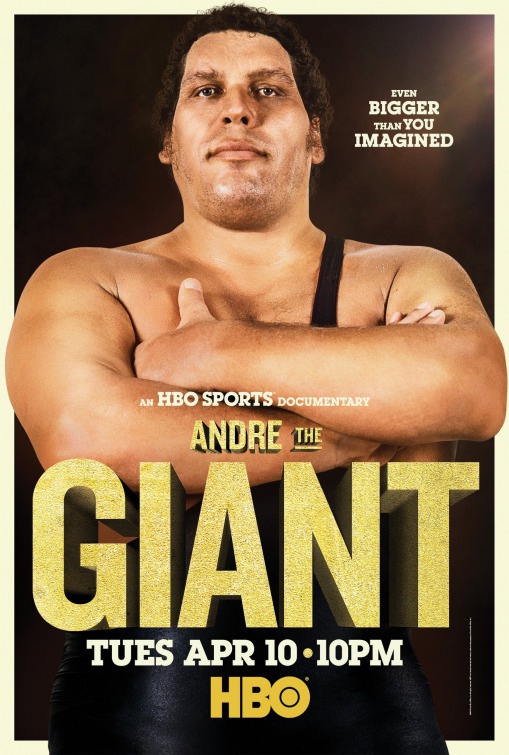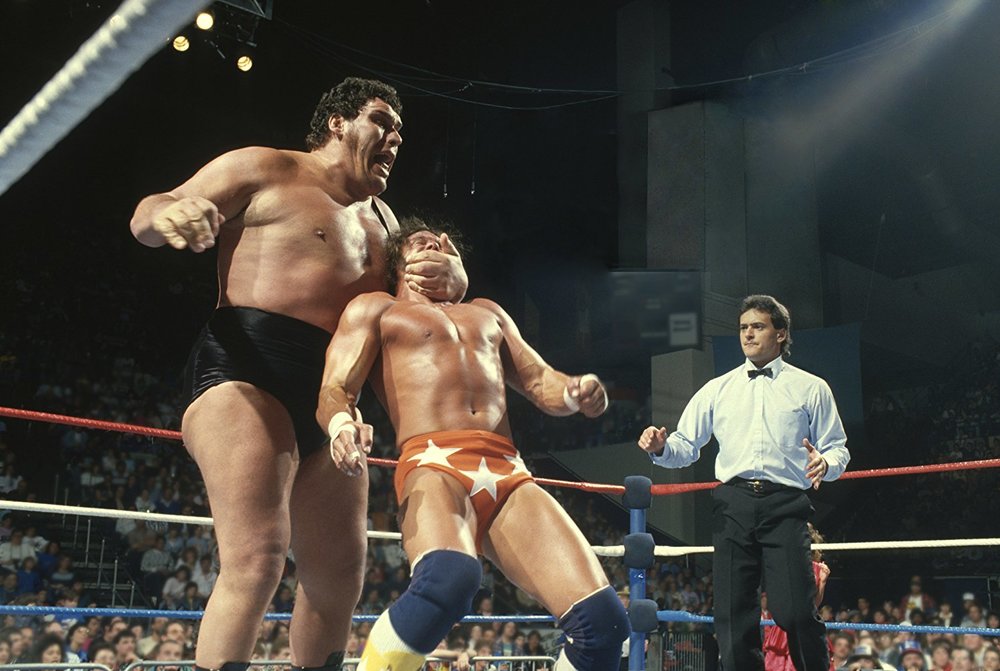Andre the Giant (2018)


SHOULD I SEE IT?
YES
Fans of wrestling, WWE/F, and/or André the Giant will find plenty to dive into here.
Offers a glimpse into the realities André experienced in front of and behind the camera. Though the film holds back, we understand the difficulties he faced for much of his life.
The sequence involving those who worked with André on The Princess Bride, says as much if not more than any other portion of the film, when understanding the man behind the persona.
NO
At 85 minutes, the film feels, ironically, too small.
If you detest professional wrestling, be prepared to see lots of footage. You can't tell the story of André without it.
You cannot help but think out loud a bit and wonder if André's myth and persona is still being protected, some 25 years after his passing. The movie hints at showing more than it ultimately does.
OUR REVIEW
Beyond the spectacle of professional wrestling, André Roussimoff was a humble, soft-spoken 7-plus-foot-tall man (though reports vary on his actual size), suffering from acromegaly, also known as gigantism. In his rare downtime outside of the squared circle and the television cameras and the packed arenas he competed in up to 300 nights per year, he lived in Ellerbe, North Carolina, population 986.
We learn that for the nearly 500-pound giant, Ellerbe reminded him of the small village in France where he was born. And in Jason Hehir’s new documentary, André the Giant, we learn that returning to a life like in his early years in Moliens, in Northern France, was something he always longed for, even as he became the biggest attraction in professional wrestling for nearly two full decades.
Roussimoff’s gigantism seemed to begin around the age of 15, and by the time he was approached to consider professional wrestling, he was 19, and over 7-feet tall. Hehir infuses archival footage of his training in the ring, as well as his first “gimmick” - a lumberjack known as Jean Ferré.
Eventually, André would make his way to North America and begin wrestling in the territory circuit that defined professional wrestling in the 1970s. At wrestling’s regional peak, more than 30 territories, in regions all around the United States, promoted wrestling. And when a Chicago promoter anointed him as “André The Giant” on a promotional poster, his career skyrocketed.
Hehir dials into how André was perceived by the public, his co-workers, and those who booked him for matches. The differences in each realm are striking, and at times, those who seemed to like and respect André the most, fail, even now, to recognize the difference. WWE's current owner Vince McMahon talks about how his father, and the founder of the company, Vincent J. McMahon, earned André’s trust and became essentially his agent, sending him out for a few weeks at a time to other territories to draw big crowds and make those top territory stars look good in the ring.
McMahon talks about how his father saw André as an “attraction” and we begin to see a world where the staged dramatics of professional wrestling began to infiltrate a man’s life where being the “attraction” was all he could ever be. Hehir gets story upon story from retired wrestlers Hulk Hogan and Ric Flair, announcer Gene Okerlund, and personal assistant Tim White, who all share the struggles André had in the real world. He could never turn off the persona of being “The Giant,” and it began to weigh on André in his private and personal life.

There are plenty of stories, lots of wrestling footage, but a wonderful sequence where Cary Elwes, Rob Reiner, Robin Wright, and Billy Crystal talk about André working with them on the film “The Princess Bride.” We learn that André’s health was failing him on set and the Giant’s brutal power and strength, as showcased in over 5,000 matches in his storied career, was gimmicked for the film with trickery and camera work. Scenes where he was required to lift or hold cast members, or even catch Wright, a move he had performed countless times in a ring with men considerably heavier and stronger, was now impossible. His back, neck, and spine so injured, he had little to no strength in his arms to execute the stunt.
Along the way, Hehir builds to André’s final main storyline in wrestling. Never having an opportunity to win the WWE (WWF at the time) Heavyweight Championship, McMahon crafted a storyline where the All-American Hero and André’s best friend, Hulk Hogan, became the enemy as the Giant turned heel and aligned himself with vicious manager and long-time Hogan nemesis, Bobby “The Brain” Heenan. André agreed to get back surgery to build to the match, which drew over 93,000 people to Detroit’s Pontiac Silverdome in the main event of the WWF’s WrestleMania III event in March 1987.
André would succumb to his health issues at 46 years old in January 1993. And as Hehir documents his life, in a solid and entertaining film, at just 85 minutes, you cannot help but feel that Hehir could have delivered more. Scenes with his surviving siblings are few, though they acknowledge that his constant traveling and wrestling commitments made having a relationship with him next to impossible. His daughter, Robin Roussimoff, shows up for less than a minute of screen time, though she mentions that while forgiving him for his schedule, she still struggles with the fact that he was never there for her.
At times, the film feels afraid to present the man behind the myth and bombast he helped create. Professional wrestling is a curious beast: people are fiercely protective of the industry, even with everyone now openly acknowledging the ring work is pre-determined and staged and the conflicts are crafted by writers. With WWE involved in the film, one cannot help but wonder how much of the film Hehir set out to make ended up on screen.
André the Giant is still, at times, a fascinating glimpse into a world that tries to isolate the reality from the performance. And unmistakably, André the Giant was a one-of-a-kind performer. Though it stings to see him so often referred to as an “attraction,” Roussimoff was the biggest star in wrestling’s territory days. He lived aggressively, staged an aggressive persona, and was a “gentle giant” until his last years in the ring.
CAST & CREW
Documentary Featuring: Hulk Hogan, Vince McMahon, Gene Okerlund, Tim White, Patrice Laprade, David Shoemaker, Dave Meltzer, Terry Todd, Rob Reiner, Robin Wright, Cary Elwes, Billy Crystal, Arnold Schwarzenegger, Ric Flair, Jerry Lawler, Jackie McAuley.
Director: Jason Hehir
Release Date: April 10, 2018
HBO Documentary Films
